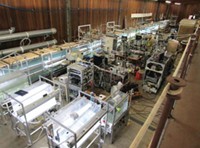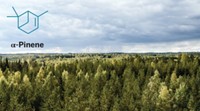Advertisement
Grab your lab coat. Let's get started
Welcome!
Welcome!
Create an account below to get 6 C&EN articles per month, receive newsletters and more - all free.
It seems this is your first time logging in online. Please enter the following information to continue.
As an ACS member you automatically get access to this site. All we need is few more details to create your reading experience.
Not you? Sign in with a different account.
Not you? Sign in with a different account.
ERROR 1
ERROR 1
ERROR 2
ERROR 2
ERROR 2
ERROR 2
ERROR 2
Password and Confirm password must match.
If you have an ACS member number, please enter it here so we can link this account to your membership. (optional)
ERROR 2
ACS values your privacy. By submitting your information, you are gaining access to C&EN and subscribing to our weekly newsletter. We use the information you provide to make your reading experience better, and we will never sell your data to third party members.
Atmospheric Chemistry
How marine bacteria influence cloud formation
Ocean-in-a-bottle experiments described at the ACS fall virtual meeting illuminate the chemical interplay between marine microbes, pollution, and climate
by Katherine Bourzac
August 17, 2020

Since the mid-1980s, environmental scientists have debated how microscopic marine life might influence the climate and the weather. Researchers suspected that the volatile organic compounds produced by these species could react to form cloud-seeding aerosols. But this hypothesis has been extremely challenging to test in the field.
“These gases have a profound impact, but they’re gone in less than a half hour,” says Kimberly Prather, an atmospheric chemist at the Scripps Insitution of Oceanography at the University of California, San Diego. For the past ten years, her group has been probing the chemical interactions between sea, sky, phytoplankton, and microbes inside a 33 m long ocean-wave simulator. The totally enclosed system makes it possible to study rapid chemical reactions in a realistic environment in the lab.
Today at the ACS Fall 2020 Virtual Meeting, Prather presented the latest results of her team’s work. The researchers had previously shown that it is bacteria, not phytoplankton, that are responsible for the release of volatile organic compounds, particularly dimethyl sulfate (DMS), from the ocean. However, the aerosol connection was difficult to make. After years of trying, they found that no matter how high they made the bacterial concentrations, they could not drive the formation of aerosols—until they added some reactive gases to replicate human influence on the atmosphere. Speaking in a presentation in the Division of Physical Chemistry, Prather reported that her team found that hydroxyl radicals oxidized gaseous DMS, leading to the formation of sulfate aerosols. Sulfate aerosols, in turn, can seed cloud formation.
Prather noted that this system is still extremely simplified. Just offshore, the ocean contains chemicals and microbes from wastewater runoff, and the atmosphere is rife with other emissions. Her team will continue to add pollutants to the system and keep watching what happens.




Join the conversation
Contact the reporter
Submit a Letter to the Editor for publication
Engage with us on Twitter